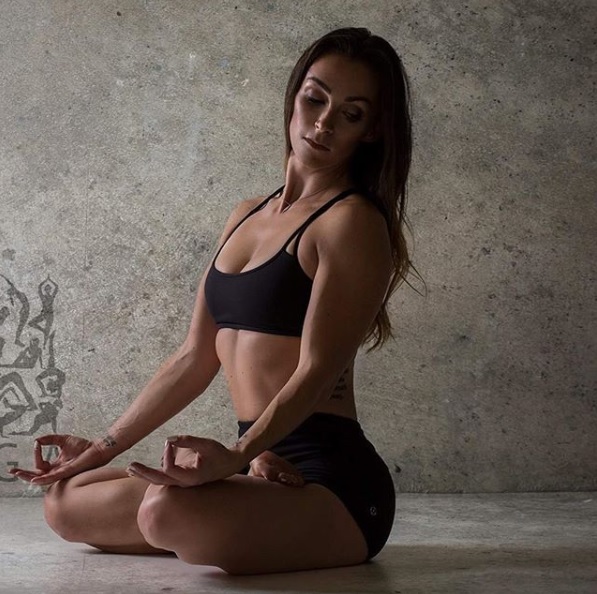This is the second in a series of articles, A Yoga Course in Miracles: exploring the 10 essential principles of yoga, and how each principle can be practiced not only on the yoga mat but also in our day-to-day lives to liberate us through love. Read the first article here and the third here.
As we each make our personal journey in yoga, it is important to cultivate and maintain the authentic principles of the practice.
Without these authentic principles present we miss the true motivation of yoga and lose ourselves in a seemingly never-ending physical challenge, and when the journey of the physical challenge ends we can be utterly lost.
And the journey does end, despite the poorly thought out and oft repeated trope that the journey goes on forever.
Everything that has a beginning has an end.
I’ve been witnessing this pattern in my yoga classes recently with some of my newer and more physically advanced students: I guide them into a yoga posture and leave them there to enjoy the delicious feelings, but that’s where they get lost. They look at me confused, “Arunji, but I don’t feel anything.”
Right there is the problem with so much mainstream yoga; it is hooking people on physicality. If a student doesn’t feel something significant physically then they literally don’t know how to feel.
Because they haven’t been taught how to feel.
The DNA of a yoga posture must be emotional, so that when the physicality of the posture ends the cultivated emotions remain: joy, peace, freedom, love, emptiness.
An asana is: joyful steadiness and ease in the body-mind, free from tension, manifesting the infinite beyond duality.
When we find ourselves in this state of yoga there is no feeling of being “stretched” because the body is free from tension. There is no longer a physical challenge because the body is completely steady and at ease. There is no more to do because the body is manifesting the infinite beyond duality.
But if the mind has not been prepared and taught to understand this state, it thinks there’s something wrong, there’s something missing, there’s something more. And this is the very trap yoga is meant to free us from, the trap of more-more-more.
Many of us have not been taught one of the greatest gifts of yoga—to be content.
That uniquely human hole inside each one of us cannot be filled with physical things, it cannot be filled with physicality.
It can only be filled with emotion: contentment, equanimity, balance, bliss, emptiness.
The feeling expresses the form.
The trend of practicing purely physical yoga without its spiritual context is short-changing practitioners and leaving students—and the teachers that teach them—emotionally, mentally, and spiritually incomplete and imbalanced.
Without the spiritual context of yoga there is a void of meaning and purpose. Without that meaning and purpose we are teaching a generation of yogins to be strong and flexible, but we are not teaching them to be in peace, to be sensitive, to be free.
It’s like raising a child to become a physical adult without the mental-emotional capacity to complement.
We must cultivate these mental-emotional qualities during our yoga journey so that when the journey ends we understand why we are doing yoga. Otherwise we find ourselves in asana manifesting the eternal but saying, “I don’t feel anything.” Then demanding ever more physicality to fill the non-feeling.
The mental-emotional qualities of yoga are specific and clear, tried and tested by yogins for thousands of years. Until now.
A social media soundbite is a bad imitation of a yoga edict. A sports brand’s advertising slogan is a poor substitute for a yoga precept. A self-help book soundbite is a cheap counterfeit of a yoga concept.
Without the authentic yoga philosophy to guide us the ancient and magical practice of yoga becomes little more than a physical performance for the approval of others, and the opportunity for the real miracles of yoga to be realised in our lives is lost.
The second of the authentic yogic qualities is called satya.
Satya is one of the foundation stones of our yoga practice. The Sanskrit word can be translated as honesty.
On the yoga mat, this translates as honesty in our exploration of asana (posture). As we move slowly into a yoga posture our body is continually giving us sensitivity signals, informing us what we are feeling and thinking.
I often hear students being encouraged not to think in yoga but rather to feel. This is a dualistic mistake. Thinking is just as important as feeling. The heart and mind should be viewed like the symbolism of Shiva and Shakti—the divine masculine and feminine within us all.
Hatha yoga is the path of cultivating balance between the reciprocal aspects of thought and feeling, heart and mind, masculine and feminine, body, and soul.
In a yoga posture we listen to the sensitivity signals of our thoughts and feelings, they are our guide to what is, what was, and what might be. We listen, and discern from what we hear.
We discern between what feels right and what feels wrong, between the good reactions and the bad, between what gives to us and nourishes, and what takes from us and malnourishes.
When we practice a yoga posture with honesty there is no cheating. We do not steal space by going further than is safe. We do not bend a knee when a knee is meant to be straight. We do not allow a muscle to collapse when it is meant to be active, or activate a muscle when it is supposed to be passive. We honour the integrity and critical alignment of the body.
How often the second yoga precept is ignored in the face of ambition? How often are we willing to discard honesty and cheat to get what we want, to create tension in the body and mind to achieve a physical goal? How often are we willing to be dishonest with ourselves in the pursuit of more flexibility and strength?
The powerful, hypermobile, and ever journeying yogin is commonplace, but the authentically honest, humble, and content yogin remains a rare species.
Through patient practice on the yoga mat, honesty becomes assimilated in every cell in our body, assimilated in our very being. It then becomes an organically conditioned response to treat other people just as we have learned to treat ourselves on the yoga mat.
In the natural transfer from the yoga mat to day to day life, we are then able discern and deny the destructive patterns our culture conditions us to play out. Our reconditioned and discerning thoughts, words, and actions become the very expression of honesty.
Honesty in our hearts and minds communicates honesty to other hearts and minds, just as surely as greed and the need for more and more moves others to be discontent. The age old relentless human pursuit.
Where will this relentless pursuit for more end? It ends with you, in your own heart and mind, in your own body and soul.
With the heartfelt practice of satya on and off the yoga mat, you can be the change you want to see in the world.









Read 0 comments and reply